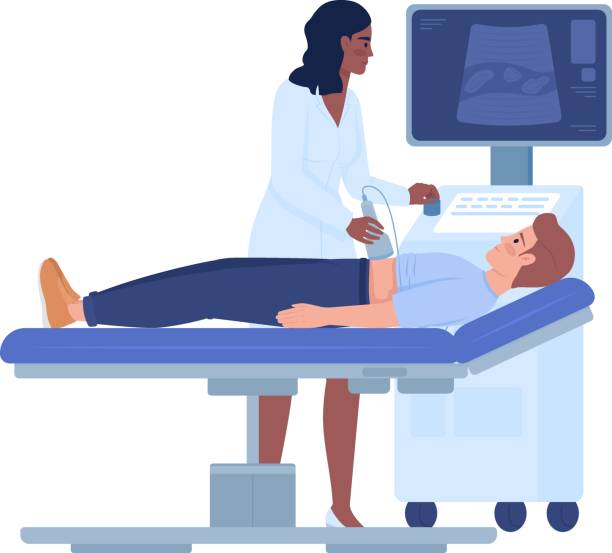Abdominal Aortic Aneurysm (AAA) – Diagnosis and Treatment
Abdominal aortic aneurysm (AAA) is a condition where the wall of the abdominal aorta, the largest blood vessel in the body, weakens and bulges out like a balloon. If left untreated, an AAA can rupture, leading to life-threatening bleeding. In this blog, we will discuss the diagnosis and treatment options for abdominal aortic aneurysms.
Diagnosis of AAA
Most abdominal aortic aneurysms are asymptomatic and are found incidentally during routine imaging tests, such as an abdominal ultrasound, CT scan, or MRI. If your doctor suspects an AAA, they may order one or more of these tests to confirm the diagnosis.
In addition to imaging tests, your doctor may also perform a physical exam to check for the presence of an AAA. They will listen to your abdomen with a stethoscope to detect any abnormal sounds, and may also feel for a pulsating mass in the abdomen.
Visit our service page: Abdominal Aorta Aneurysm Scan

Treatment of AAA
The treatment for an abdominal aortic aneurysm depends on several factors, including the size of the aneurysm, your age, and your overall health. Treatment options include:
Watchful waiting: If the aneurysm is small (less than 5 centimeters) and you have no symptoms, your doctor may recommend regular monitoring with imaging tests to watch for any growth or changes.
Endovascular repair: Endovascular repair is a minimally invasive procedure that involves placing a stent graft through a small incision in the groin to reinforce the weakened area of the aorta. This procedure is typically used for aneurysms that are large or growing quickly.
Open surgery: Open surgery involves removing the damaged portion of the aorta and replacing it with a synthetic graft. This procedure is typically used for larger aneurysms or when endovascular repair is not possible.
Medications: Your doctor may prescribe medications to control blood pressure, reduce cholesterol levels, or prevent blood clots from forming, which can help slow the growth of an AAA.
Conclusion
Abdominal aortic aneurysm is a serious condition that requires prompt diagnosis and treatment to prevent potentially life-threatening complications. If you are at risk for an AAA or have symptoms such as abdominal pain or swelling, it is important to talk to your doctor about getting screened with imaging tests such as an abdominal ultrasound. Early detection and treatment can improve outcomes and reduce the risk of rupture.
FAQs
What are the risk factors for abdominal aortic aneurysm?
The risk factors for AAA include age (over 60), male gender, smoking, high blood pressure, high cholesterol, and a family history of the condition.
Is there anything I can do to prevent an abdominal aortic aneurysm?
The best way to prevent an AAA is to avoid smoking, maintain a healthy weight, and manage conditions such as high blood pressure and high cholesterol.
What are the symptoms of an abdominal aortic aneurysm?
Most abdominal aortic aneurysms are asymptomatic, but some people may experience abdominal pain, back pain, or a pulsating mass in the abdomen.
How often should I get screened for abdominal aortic aneurysm?
The frequency of screening for AAA depends on your age, gender, and risk factors. Your doctor can recommend a screening schedule based on your individual risk profile.
Is surgery for an abdominal aortic aneurysm risky?
All surgeries carry some degree of risk, but the risk of complications from surgery for AAA is generally low. Your doctor will discuss the risks and benefits of each treatment option with you to help you make an informed decision.

